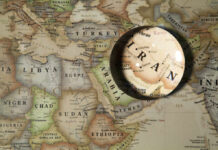
The deployment of China’s aircraft carriers in the Pacific has sparked major concerns globally about the shift in the balance of military power.
At a Glance
- China’s dual-carrier operations are challenging U.S. maritime dominance.
- The carriers are training for joint operations beyond the First Island Chain.
- This deployment could signal a shift in global military strategies.
- Japan has heightened its defenses amid China’s growing naval activity.
China’s Maritime Expansion
Photos recently released by the Chinese People’s Liberation Army Navy (PLAN) showcase the dual deployment of the Liaoning and Shandong aircraft carriers beyond the First Island Chain, marking a significant development in China’s maritime capabilities. This move places China in a position to increasingly challenge U.S. maritime strategies in the Indo-Pacific.
The PLAN’s public reporting indicates a substantial naval presence in strategic waters, which invites speculation on the broader geopolitical implications. “Chinese naval vessels’ activities in those waters are fully consistent with international law and international practices,” said Lin Jian, a sentiment sure to be scrutinized by military analysts.
Geopolitical Repercussions
The J-15T fighters on Liaoning being equipped for CATOBAR operations—despite missing the equipment on the carrier—further points to China’s ambitions to expand its naval prowess. Meanwhile, Japan’s Ministry of Defense has confirmed the carriers’ operation beyond the First Island Chain, which extends Japan’s strategic interest in this evolving scenario.
“China’s navy on Tuesday confirmed the deployments, calling it part of routine training in the western Pacific “to test their capabilities in far seas protection and joint operations.” – China’s navy
The Shandong task group, consisting of a Type 055 destroyer among others, illustrates a strategic maneuver to challenge the U.S. Navy’s access to these critical waters. The presence of Chinese carriers in these waters is an explicit assertion of China’s expanding power not only in the Indo-Pacific but potentially further into the Pacific.
Military and Strategic Considerations
Japan is reacting by fortifying its air defenses and military capabilities in response to China’s challenging actions. While China’s naval power is numerically the largest globally, its future operations, which could extend beyond the Second Island Chain including U.S. territories, provoke countries to reconsider their defense strategies and alliances.
“Taiwan, which China claims as its own territory to be conquered by force if necessary, said the carriers’ dual operations showed China’s “expansionist nature.” – Taiwan
The promise of China’s third carrier, Fujian, which is undergoing trials, indicates a coming shift towards regular tri-carrier operations. The overarching goal is clear: China aims to create a blue-water navy that not only competes but potentially rivals the U.S. Navy’s prowess worldwide. How Washington and its allies react remains to be seen, but it’s evident the gears of military re-strategizing are already in motion.

























